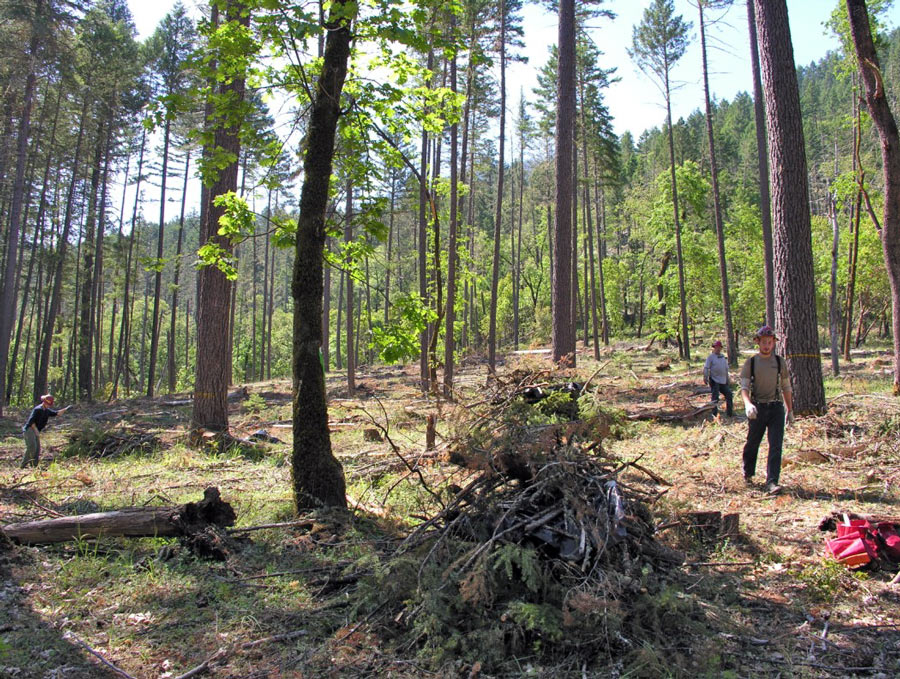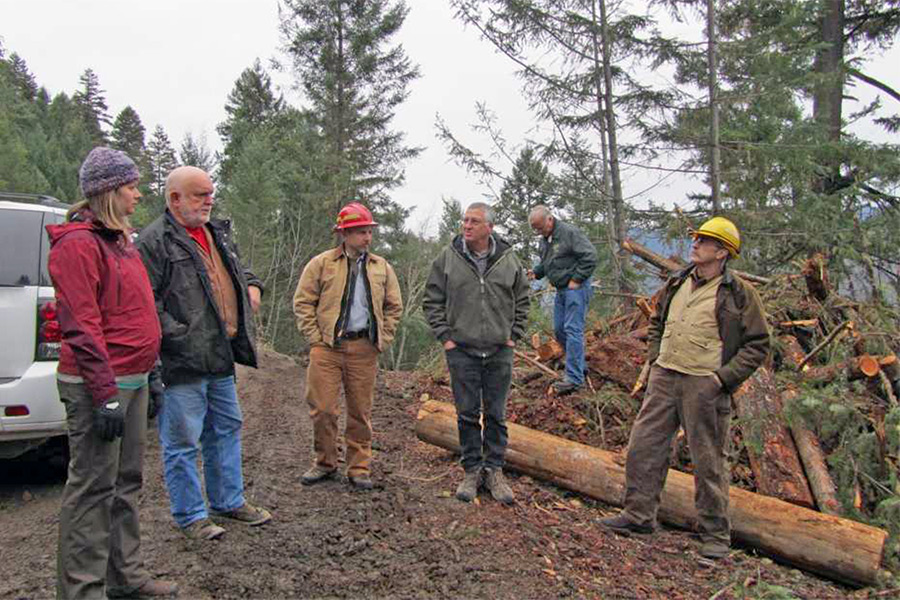Case Study: Pilot Joe
Summary
In 2010, SOFRC convened the 3-day Solutions for Forests conference at Southern Oregon University in Ashland, Oregon, attracting over 200 people to discuss challenges to landscape-scale restoration and seek ways to manage forests and retain the ecological habitat functions that forests provide. A field trip highlighted the Applegate as an area where dry forest with a historically frequent fire regime needed active management.
Following this field trip, the Middle Applegate Pilot Joe landscape-scale restoration project was designated by United States Secretary of Interior Ken Salazar as a secretarial pilot project. Secretary Salazar called on Drs. Jerry F. Franklin and K. Norman Johnson noted forestry scientists and authors in the Pacific Northwest to work with local BLM Medford managers in the application of dry forest restoration principles that would protect habitat and reduce fire risk while providing employment, maintaining mill infrastructure, and building public support for the active restoration of federal forests
Long-term ecological objectives of the project include:
- Increasing forest and ecosystem resistance and resilience,
- Increasing spatial heterogeneity to benefit biodiversity and species of concern at the stand and landscape scale, and
- Conserving and improving northern spotted owl habitat through late-successional emphasis (LSEA) area design.
The social objectives included:
- Generating jobs and supporting regional manufacturing infrastructure and
- Gaining public support for active management in federal forests.

Why is multiparty monitoring important?
Multi-party Monitoring documents whether ecological and social objectives are being met in both the short and long term. Monitoring also informs management so that updated practices can be applied and refined. Long-term monitoring can assess whether the key restoration principles are having the desired ecological effects.
Multiparty Monitoring Team
During a June 2011 facilitated public meeting, attended by over 40 interested community members, ideas were shared about how to identify monitoring needs and goals, ensure successful monitoring, and gauge participant interest in involvement in the monitoring process.
As an outcome of this meeting, the SOFRC assembled a diverse team of engaged community and agency members to create and implement a monitoring plan to assess on-the-ground progress toward Pilot Project goals. In the winter of 2012, the SOFRC received support from the Medford District Resource Advisory Committee to convene, facilitate and advance the work of the Middle Applegate Pilot Multiparty Monitoring team.
The initial phase of the Pilot Multiparty monitoring effort was conducted prior to project implementation in 2011 and immediately following treatments in 2013. Reports were posted to the BLM website.
In 2016 the multi-party monitoring team received additional Title II funds to complete 5-year post-treatment data collection and shared those results internally with BLM specialists and during two public field tours.
Post Treatment Results
Based on the measured indicators from the initial and 5-year time frames, results indicate that ecosystem resistance and resilience are increasing. The dry forest restoration approach developed by Drs. Franklin and Johnson increased biodiversity by conserving and enhancing important habitats, increased resistance, and resilience of the forests to disturbances, provide job opportunities and forest products, and also gained public support. A few of the indicators, such as tree vigor and understory species diversity and recruitment, will take time to respond to the altered post-treatment conditions. The anticipated 10-year monitoring will provide additional data and results to inform these longer-term variables.
Next Steps
In 2021 funding is available for the Pilot Joe project monitoring team to conduct 10-year post-treatment data collection. The results will be available in 2022 and field trips to discuss the results will be led by SOFRC.
The high visibility of the pilot project with Drs. Johnson and Franklin placed the project in a historical context of forest management. This opportunity to assess 10-year post-treatment results along with the continued interest is a testament to the soundness of the project principles, the dedication of core members of the Monitoring Team, and the importance of case studies examining the effectiveness of landscape restoration.

